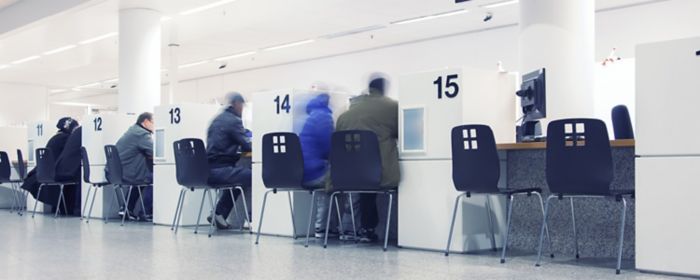It has become easy in our hyperconnected, fast-moving consumer world to view citizens and customers through the same lens, when in today鈥檚 reality, customers and citizens differ in terms of their specific behaviors, needs and expectations. Cities have a responsibility today to identify, understand and respond to the diverse needs of all stakeholders they serve. Creating a true experience-centric ecosystem will help define the look, feel and function of tomorrow鈥檚 cities.
Simply put, citizens have similar but often deeper expectations, requirements and rights than the typical everyday customers, residents or visitors engaged in a transaction-based relationship that provides products and services. In essence, a citizen has the right to expect and receive timely, precise, citizen-focused services and experiences that effectively and consistently cater to their unique personal needs as well as those of the common good.
This translates into a significantly more-complex relationship between citizens and cities, and the inevitable need for municipal governments to evolve accordingly 鈥� particularly as the modern, personalized, experience-centric services being provided by today鈥檚 businesses continue to influence and heighten the service expectations of citizens.
We view this as the 鈥榗itizen-customer鈥� paradigm. Citizens 鈥� individuals and business constituents alike 鈥� increasingly view themselves as 鈥榗itizen-customers鈥� with growing expectations of municipal services and the experience provided. In turn, future-focused cities need to model their services and processes after the best of today鈥檚 customer-centric companies, effectively meeting the community-wide needs of all constituents in today鈥檚 new reality.
Modernizing services, accelerating responses and optimizing the end-to-end citizen-customer journey is poised to become the new norm for cities and their services. Strategic and intentional digital adoption and connectivity is the inevitable way forward. But successful transformation should also look beyond new technology to include a precise understanding of exactly how modern digital capabilities and services will benefit every citizen-customer being served.
As today鈥檚 city administrators explore and unlock new capabilities, they must also have an 鈥榚ar to the ground,鈥� using technology and new channels to hear their communities in new ways and ultimately respond effectively to the array of signals emanating daily from those they are responsible to serve. The future involves creating an experience-centric ecosystem of services and information sharing and forward-looking cities are increasingly embracing the game-changing power of digital technology to become more attuned and responsive to public needs.
Administrators can increasingly listen to the weak signals emitted by those referred to as the 鈥榮ilent majority鈥� to optimize planning, development, service delivery and ultimately sustainability. However, getting better at listening can sound like 鈥榮pying鈥� and care must be taken at every junction to protect and even enhance citizens鈥� rights to the privacy of their personal information.
Service experience as a new battleground
From an experiential perspective, there is no doubt that citizens鈥� expectations of government are being influenced continuously. They are being influenced by every interaction and transaction that people experience when engaging as valued customers with today鈥檚 data-driven, consumer-centric businesses.
In the age of the customer, make no mistake 鈥� 鈥榚xperience鈥� is poised to be the battleground for businesses and municipal governments alike. Cities should therefore recognize the impact of modern customer experiences on those they are serving each day across the broad spectrum of public service. Promoting service optimization, responsive delivery and end-to-end citizen-customer journeys must be the new norm for cities and their services. At the same time, cities should continue to provide bricks-and-mortar infrastructure and facilities to consistently meet the needs of those who are not fully digitally enabled.
Like today鈥檚 high-performing, market-leading businesses, forward-looking city leaders should view the experience they are delivering, and its purpose, in terms of what each citizen-customer is trying to achieve during every interaction.
In recent years, there has been a monumental pivot from 鈥榠nside-out鈥� thinking 鈥� a focus on how organizations can optimize internal processes 鈥� to an 鈥榦utside-in鈥� approach that begins with a comprehensive view of the customer perspective to maximize efficiency. While businesses have boldly set the pace on this front, local governments generally still need to pivot to a new mindset that replaces age-old 鈥榠nside-out鈥� perspectives and approaches with intentional digital adoption and experiences that optimize services and outcomes.
Success demands insights into what citizens do, say and share
While cities pursue modern services for a new era, it is crucial to understand that the totality of municipal services and experiences can ultimately impact public and individual perceptions and overall satisfaction regarding the services provided. Beyond listening and hearing public signals in new ways, the challenge also involves the need to connect and align typically siloed and disconnected local services, departments and databases.
Modern, fully connected digital infrastructure can help unlock powerful new capabilities for cities to enhance their understanding of public needs and experience expectations. This has become particularly important amid the global pandemic鈥檚 far-reaching disruption and the resulting critical need for health services, emergency support spending and subsidies, unemployment benefits and more for affected individuals, businesses and communities.
Meeting the challenge of hearing and understanding public needs and experience expectations is hard work that demands, a clear and consistent focus on what all stakeholders are saying 鈥� both the soft and the loud signals emanating from those being served. Social media channels, online reviews, satisfaction e-surveys and the like are but a few examples of how cities can tap into public thinking and calibrate services, as is the smart use of data and analytics for timely insights that drive appropriate and satisfying services.
The German city of Heilbronn, for example, is reaching out to the community as never before to help shape the future for its 125,000 inhabitants. The city鈥檚 comprehensive roadmap for success as a smart city is its Digital City of Heilbronn 2030 plan, which will encourage public participation in addressing key local issues such as future mobility in the city, education and the ongoing enhancement of local administration and infrastructure to better serve citizens and business.1
The city鈥檚 guiding principle in developing the plan with help from 乐鱼(Leyu)体育官网 in Germany is clear: 鈥淭echnical solutions must not be an end in themselves. Rather, they must be used to solve problems, improve the quality of life for citizens and encourage active participation in urban life and its design".2
Key takeaways
- Creating intention-based, experience-centric services is poised to be the new battleground for cities.
- Cities pursuing enhanced outcomes that will meet their vision for the future will need to become more data-driven, while also breaking down existing silos and sharing data organization wide.
- With the knowledge and understanding of what stakeholders need, and what is required to achieve appropriate new services and capabilities, it becomes critical to enable, execute and sustain the right experience. Smart cities are tapping into public opinion for timely insights that can help drive appropriate responses and experiences.
Contact us
Explore
1 https://www.bable-smartcities.eu/connect/cities/city/city/heilbronn.html#projects
2 https://www-kommune21-de.translate.goog/meldung_31249_Vision+f%C3%BCr+2030.html?_x_tr_sl=de&_x_tr_tl=en&_x_tr_hl=en&_x_tr_pto=nui,sc


